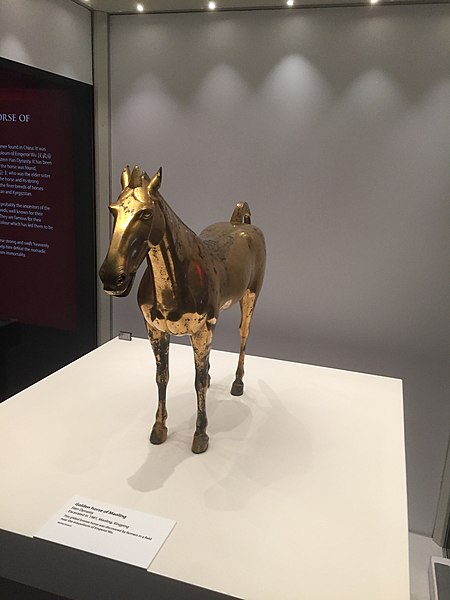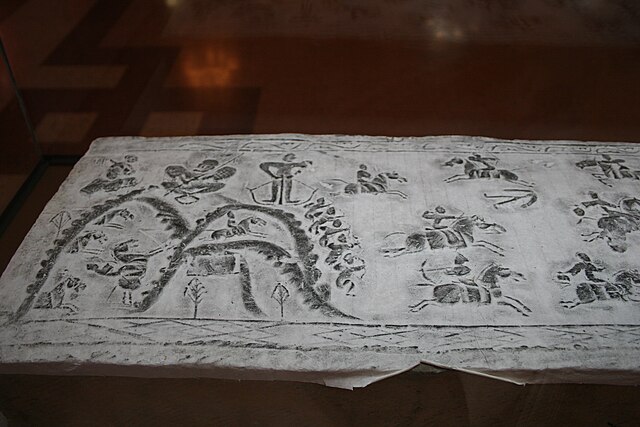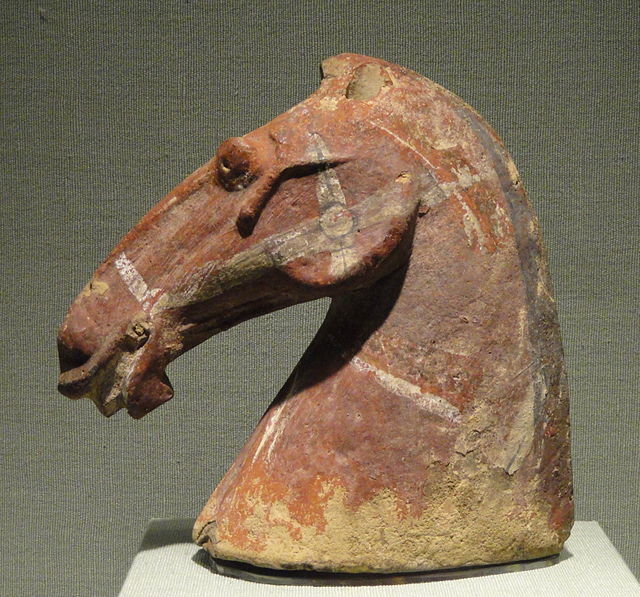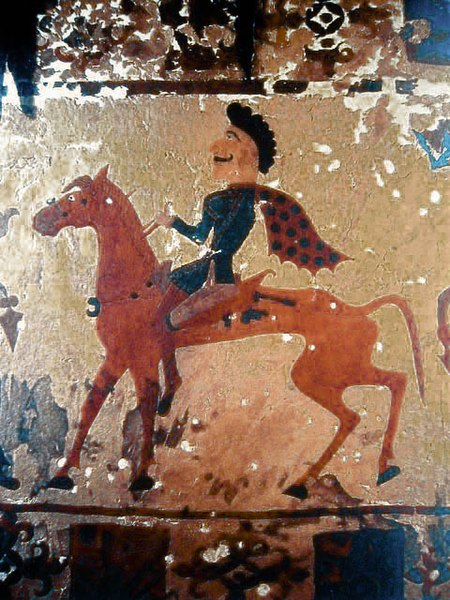War of the Heavenly Horses
The War of the Heavenly Horses or the Han–Dayuan War was a military conflict fought in 104 BC and 102 BC between the Chinese Han dynasty and the Saka-ruled (Scythian) Greco-Bactrian kingdom known to the Chinese as Dayuan, in the Ferghana Valley at the easternmost end of the Greek empire. The war was allegedly instigated by trade disputes compounded by the extended geopolitics surrounding the Han-Xiongnu War, resulting in two Han expeditions that eventuated in a Han victory, allowing Han China to expand its hegemony deep into Central Asia.
Golden horse of Maoling
A man spanning a crossbow in a battle scene, Han dynasty
Bust of a horse, 1st century BC, Han dynasty
Dayuan is the Chinese exonym for a country that existed in Ferghana valley in Central Asia, described in the Chinese historical works of Records of the Grand Historian and the Book of Han. It is mentioned in the accounts of the Chinese explorer Zhang Qian in 130 BCE and the numerous embassies that followed him into Central Asia. The country of Dayuan is generally accepted as relating to the Ferghana Valley, controlled by the Hellenistic polis Alexandria Eschate, which can probably be understood as "Greco-Fergana city-state" in English language.
Probable Greek soldier (maybe king according to royal headband), woolen wall hanging, Sampul tapestry, 3rd-2nd century BCE, Sampul, Urumqi Xinjiang Museum.
Silver tetradrachm of King Eucratides I, who probably lost the territory of Ferghana to the Sakas.
A Saka (Scythian) horseman from the area north of the Tian Shan, Pazyryk, c.300 BCE.
Zhang Qian leaving emperor Han Wudi, for his expedition to Central Asia from 138 to 126 BCE, Mogao Caves mural, 618–712 CE.







